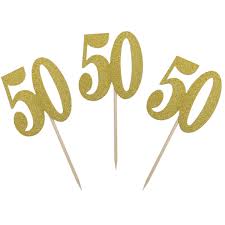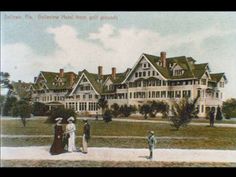The Garden Seat Restaurant, By Bob Griffin
The ‘GARDEN SEAT’ RESTAURANT
All In The Family
(100th Anniversary)
By Bob Griffin, Publisher
The “Garden Seat” was one of Clearwater’s ‘must-go-to’ restaurants once located high on the bluffs overlooking Clearwater Bay (1234 Druid Road South). Today it is just an over-flow parking lot with green space across the street from Morton Plant Hospital. It opened 100 years ago this year. The Garden Seat, later known as “Siple’s” to the locals, was started in 1920 by Mary Boardman and kept in the family through four generations–until it closed in 1990.
Mary Sheffeld Boardman was a transplant from the Boston/New England area. She was born in 1867. She married Sam Boardman, and had one child, Eleanor. (Eleanor learned the piano and later taught music at the Boston Conservatory in and around 1920 where she met and married her future husband, Frank—who was also a music teacher at the conservatory.)
Mary and Sam, managed a small Inn and restaurant called the “Twitchell Lake Inn” in the Adirondacks (in northern New York). They became “snowbirds” and moved to Clearwater about 1915, to escape the cold New England winters. (Her only daughter, Eleanor, stayed up north, working at the Boston Conservatory of Music.)
Mary always wanted to own a restaurant. At about age 50, she found a house–the old Boyd homestead–overlooking Clearwater Bay. This was a large plot of land, which encompassed the land where Morton Plant Hospital now sits, down to the water’s edge. When she consulted a local banker about a loan, he turned her down claiming “it was too far out of town to start a business.” (about a half mile south of Cleveland Street.)
As everyone found out, Mary Boardman was a very strong-willed lady. She bought the place anyway and with the help of her close friend, Clara Lambert Rombach, a.k.a. “Aunty Lam”, she proceeded to convert the home into a New England-style tearoom and homey restaurant. This meant a lot of plumbing, painting and basic refurbishing. While working very long days, they would fix their meals on the home’s oil-fed stove trying out new recipes as they worked. Clara became Mary’s close friend, financial advisor, and later ran the onsite gift shop for the next 30 years. They added a garden with trails and benches down to the water, thus the name, “Garden Seat”.
The restaurant was basically a large house with five bedrooms upstairs—it was sort of a ‘bed and breakfast’ in the beginning. Mary and Sam lived upstairs in the master suite overlooking the bay. They rented the other rooms to bring in extra money. There was a second building on the property which had a two-car garage, a laundry and living quarters for some of the staff.
When the residents of Clearwater were looking for a place to build a hospital, Mary sold off half her land to the east, and they built the “West Coast Hospital” (later named Morton Plant Hospital) which opened 1916.
After buying the land around 1915 Mary and Sam continued to “snowbird” to the north, continuing to manage the “Twitchell Inn” in the Adirondacks off season (in the summers). The Clearwater restaurant did not open until 1920. After Mary opened the restaurant, daughter Eleanor married Frank Siple (1921) in Boston, had two children (Fraser and Richard (Dick) and moved to Clearwater in the mid-20s to be with her parents. (MFTR: Fraser (1924) and Richard (Dick, 1925)).
The parlor had a large fireplace and became the waiting room. Guests would mingle and wait for their names to be called. To Mary, every customer was a friend in her home.
The location of The Garden Seat was in the middle of the best section in town. Many of the locals were the well-to-do people of Clearwater, such as Morton Plant, Donald Roebling, Robert Brown, Dean Alvord, mayors, county commissioners, doctors, lawyers, businessmen and more of that era. And still the parade of well-known people followed for decades—from the 40s through the 80s. It was the place for the “Who’s Who” of Clearwater.
In the 20s and 30s, very few people had cars. Many of them were out of state guests staying at the nearby Belleview Biltmore, Gray Moss Inn, or other area hotels. Most came by taxi or chauffeur-driven limousines. Morton Plant himself was a regular guest. In that era, they were only open for “season”—winter and fall. The northern tourists were not here in the summer and there was no air conditioning, either.
(During the off season Eleanor and Frank returned to the northeast to run a small B&B called the Twithchell Lake Inn in the Adirondacks.) Being from the northeast, Mary (and later Eleanor) believed that all good food came from some place else. It was the Garden Seat’s policy to serve only the finest food available even if it meant going out of state to get it. She imported all her steaks and roasts from Boston. She got her butter from Wisconsin, and nuts (for her famous Macadamia Nut Pie) from Hawaii. And since this was Clearwater, the freshest fish from local fishermen.
Mary and Clara rode out the decades that followed, the ups and downs of the land boom (and bust) of 1925-26, the depression of the 30s, hurricanes and two World Wars. After the second World War, business had increased so much that Mary added the “Bay Room”, a larger dining room facing the Bay to the west. The parlor became more dining space. They celebrated a re-grand opening in 1953. In 1955, she retired at the age of 88 (and died a year later). She handed the reigns of management over to her daughter, Eleanor Siple and her husband Frank. Eleanor changed the restaurant’s name to “Siple’s Garden Seat” and the gift store to the “Franelle Shop” a combination of their names, Frank and Eleanor. She preferred running the two onsite stores—a gift & dress shop and turned the restaurant management over to her two sons, Fraser and Richard (Siple)–now in their early 30s. Fraser, the older son, liked greeting the guests and managing the dining rooms. The younger Richard got his start in the kitchen cooking food and washing pots, pans and dishes. He remembers hearing the tall tales from the chauffeurs in the kitchen who were given free meals.
In 1959, they discovered air-conditioning and started opening year-round. Richard became the main manager and Fraser preferred running the gift shop and doing the accounting. “I remember the construction years, laying bricks and concrete blocks by myself,” recalls Richard. The building was enlarged. The foyer changed. They added a pub. The kitchen was relocated. All this accomplished without closing for a single day. The restaurant was a “Labor of Love”. It soon became a 7am to 11pm–seven day a week enterprise.
Richard (and his wife LaVerne), with the help of their children, Marvin and Caroline, ran the restaurant until it closed in 1990. “We both worked for mom and dad in the restaurant while we were growing up,” says Marv Siple, now 67. “We did everything from clearing tables to cooking to greeting. Caroline did the books in the office. I was 37 when Dad sold it.”
Richard Boardman Siple, did a fine job of continuing his grandmother’s dream. The restaurant always had a reputation for excellent service, hospitality, gourmet food, specialties prepared at the table side, and a long list of home cooked desserts. Patrons would browse the lush gardens down to the waterside and wait for their tables.
The Garden Seat, in its day, was one of the three oldest restaurants in the state of Florida, following The Columbia in Ybor City and Joe’s Stone Crab in Miami. The Garden Seat, while open, was a winner of the “Golden Spoon Award” ten times and considered one of the best restaurants in the state. The Garden Seat was sold in 1990 by Richard and LaVerne Siple to the Morton Plant Hospital Foundation. Half of the proceeds of the sale was returned to the Foundation as a donation.
The site of the restaurant today is an overflow parking lot next to the Morton Plant Foundation building, next to the Morton Plant’s heliport for emergency helicopters.
The ‘GARDEN SEAT’ RESTAURANT
Was All In The Family
By Bob Griffin, Publisher
Opened 100 Years Ago (1920)
CREDITS:
Florida’s Pinellas Peninsula, by June Hurley Young
And Clearwater, A Pictorial History, by Michael Sanders
(Photos: CW Library and Heritage Village)
CW Historical Society / Museum
===============





